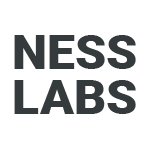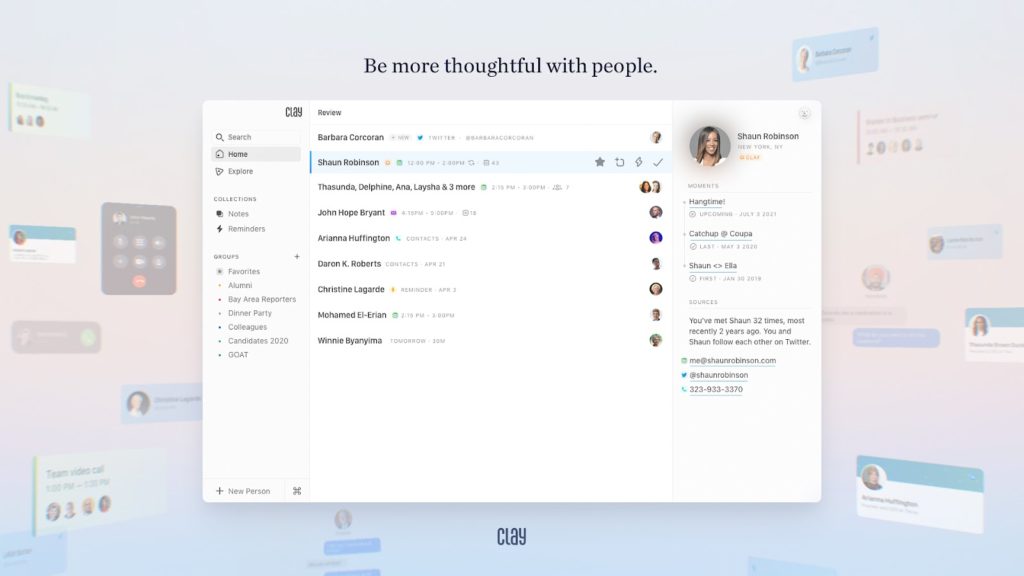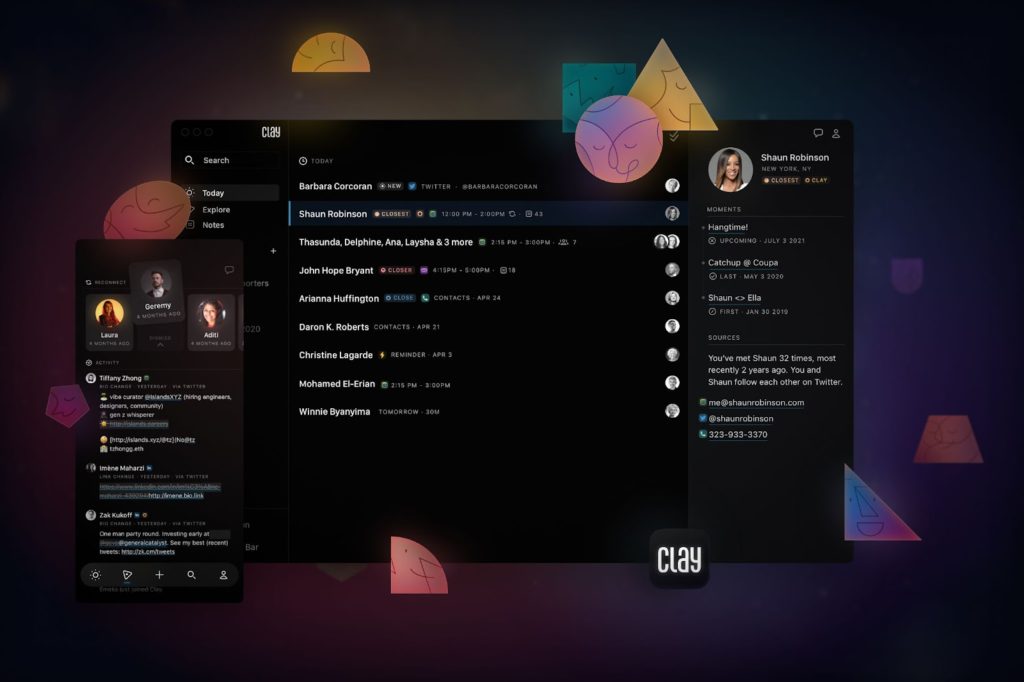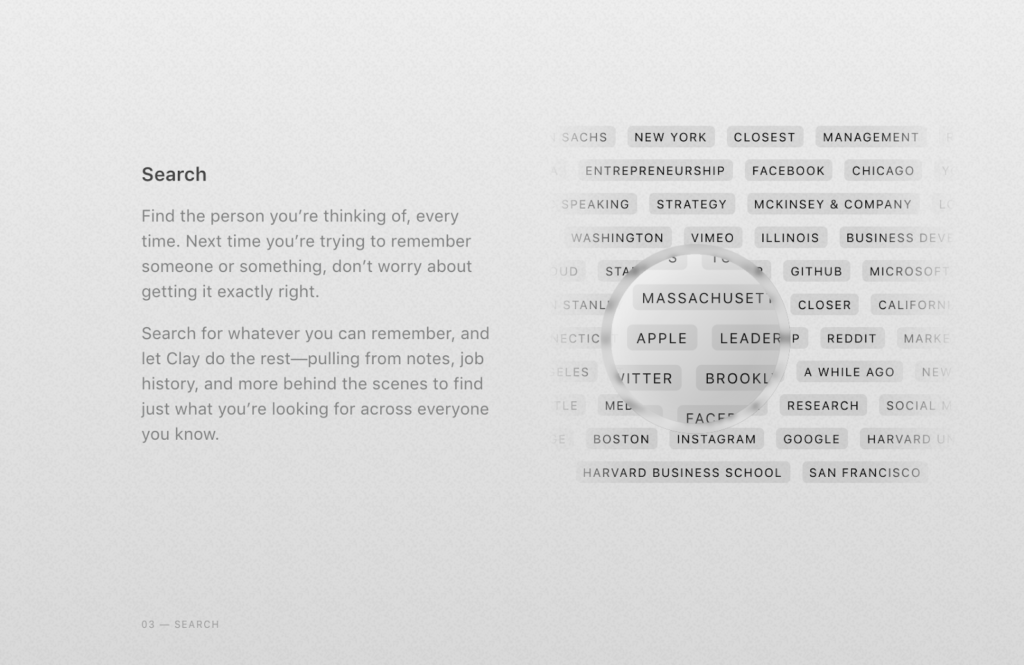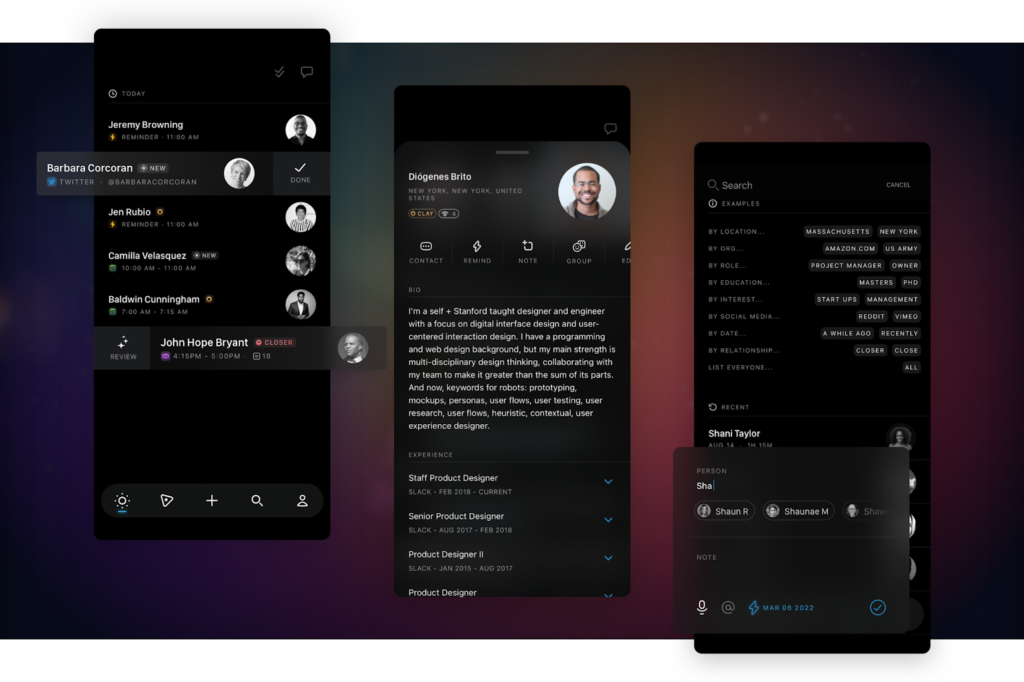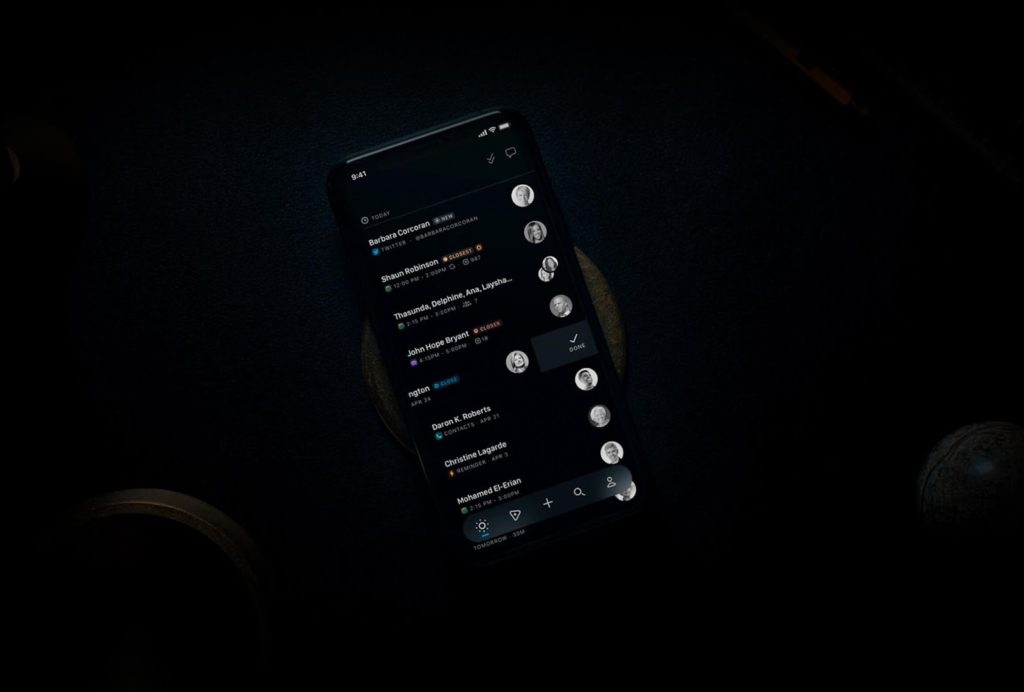Welcome to this edition of our interview series, where we meet with founders on a mission to help live more fulfilling personal and professional lives. Zach Hamed and Matthew Achariam are the co-founders of Clay, a beautiful and private home for all your relationships which is populated using your calendar and social history.
As you know, at Ness Labs, we care a lot about nurturing authentic relationships and building thoughtful learning communities, so it was fascinating to learn about Clay’s approach to helping us remember who you’ve met and what matters to them.
In this interview, we talked about how we rely on relationships to make sense and meaning of the world, the power of serendipity, the problem with social media feeds, how the team at Clay designed a holistic and cohesive solution for thoughtful relationship management, and much more. Enjoy the read!
P.S. Zach and Matthew are kindly offering two months of free membership to Clay to Ness Labs readers. Just use this link to unlock this special offer.
Hi Matt and Zach, thank you so much for agreeing to this interview. Despite being more connected than ever, we still struggle to nurture our relationships with others. Why do you think that’s the case?
Thanks for having us! We’re longtime readers and fans of Ness Labs, so we’re really excited to be here.
It’s a great question. We talk about this exact tension constantly at Clay. How do we take these incredibly important things — relationships — and give them the real care and attention they deserve? Because we know that relationships are important. And they’ve only gotten more important in the past few years as everyone has been spread out and often isolated.
Still, people feel like they’re falling behind with their friendships, professional relationships, both online and offline — and there’s data to back that up. The average professional meets 3500 people over the course of their professional career, and that’s only increasing. Our friends and coworkers are changing careers more often than older generations. And so we have more relationships in more contexts — with a lot of relational turnover.
So it’s not surprising that people spend 63% less time with coworkers in 2012 than they did in the mid-1970s, and 49% of professionals say it’s hard to keep in touch with their network. The tools and systems we use to connect with others have increased from in-person meetings, phone calls, and text messages to an arsenal of social platforms and apps where everyone we know has equivalent standing based on a ‘follow’. The end result is that now you’re wading through engagement pictures of someone that you aren’t sure how you met — right next to updates from really important relationships.
Those changes have only been exacerbated by the pandemic. People met 20% fewer people at work over the past two years, and the time spent on personal relationships has also dropped significantly since people have been unable to meet in social settings.
Based on personal experiences and data-driven research studies, it’s becoming increasingly apparent that we’re devoting less time to more relationships, and we’re feeling worse about it.
Our networks are larger and more spread out than they’ve been. So, people feel spread thinly because they are! Yet, paradoxically, relationships are more important than they’ve ever been, too. As the world of possible jobs, entertainment, ideas, etc. gets larger, our relationships act as guides and curators to what we should pursue and how we should process our life.
We rely on relationships to make sense and meaning of the world, to find opportunities for work and recreation, to examine ideas. Even though relationships are more important than ever, we are using tools which are not specifically designed to nurture relationships in the current ecosystem where relationships live. And so we built Clay to be a modern tool that can help people feel thoughtful with the people in their life, without feeling overwhelmed or stressed.
I think that’s a struggle everyone can relate to. What about you… What struggles did you face in maintaining your relationships before you built Clay?
We built Clay out of a deeply personal need. We’re both immigrants or first-generation, and our relationships were the most important things we had growing up. Our jobs, our internships, our biggest opportunities in high school, college, and beyond — they all came from people.
Relationships formed the center of our lives, but we realized they didn’t really have a home. They were all over the place: scattered in notes, apps, text messages, social media, email, different jobs, or company accounts.
We tried everything. We started with a spreadsheet, with columns for names and locations and tags. We signed up for countless tools. And they each had their benefits. But over time they were acquired, or shut down, or went dormant. Matt and I, at various points, built solutions for ourselves, separately, out of pure frustration. We just wanted a home for our people.
Evernote and Apple Notes were our solutions at the time, but we also coded our own version with a local database and a simple frontend. Lots of people try building their own solution for this problem, only to find out that (1) it’s a *lot* of work, and (2) your homegrown solution grows stale almost instantly when you start adding info to it manually. People move locations, APIs become deprecated, and over time things become messier and messier until you no longer check it.
So after years of thinking “there has to be a better way!”, we talked to hundreds of professionals across myriad industries, and we realized that this is a fairly universal problem with a million different solutions. It’s a very personal problem to a lot of people. For some, it could be a physical notepad where they write down quick notes or birthdays, very similar to an old-school Rolodex. For others, it’s digital notes apps. Some use a spreadsheet and a few use actual CRMs like Salesforce. Everybody sort of gravitated towards the solutions that resonated with them or the tools that they use in their professional life and sort of tried to shoehorn other types of relationships into them.
And so we said, let’s carefully design a product that pays attention to the nuances of relationships and helps people be more thoughtful with the many different types of people they interact with, personally and professionally. And that’s how Clay was born.
Scratching your own itch is often a great way to get started, and it looks like you’re not the only ones feeling that itch. There has been a surge in personal CRM tools recently. What makes Clay different from other solutions?
We’ve built Clay around a system of values and principles for deepening relationships that we designed from countless hours of research, interviews, and experimentation. Because we established those values and the method first, and then built out the features that naturally flowed from them, Clay actually helps you be more thoughtful. It feels holistic and cohesive.
In addition to the system that our members pick up by using Clay, there are a few more reasons why they love using the software. First, after you connect your email, calendar, Twitter, LinkedIn, and iMessage, Clay does a ton of work automatically for you. There’s no data entry or manual upload that other software tools make you go through.
If you ever need help, or need us to import something for you, we’re just an email away. We do 1:1 onboarding calls to answer any questions, from how to set up Clay to power user pro-tips and best practices. And we ship new features and improvements multiple times a week, to the point where we’ve pushed a feature in the afternoon for an onboarding call we had in the morning.
Clay is also beautifully designed. The small interactions that save time and make things easier matter, and we intentionally design every last detail. Our members tell us Clay is the most stunning tool they use daily and that we’re incredibly responsive when they have questions or feature requests. We care. And that’s increasingly rare in tech and software nowadays.
Our goal is to help you think about that person that you may have forgotten. To remember that birthday. To reconnect if it’s been a few months. Our entire team is singularly focused on that, and the product is tailor-made to make that easier. And we have a sustainable business model so we can focus on improving that over time.
We tend to appreciate thoughtfulness even more when we don’t expect it. How does Clay help cultivate serendipity in its users’ relationships?
We’re big believers in serendipity — unexpectedly running into someone you needed or a chance encounter with someone new that blossoms into a lifelong bond. Clay is designed to amplify that by resurfacing people, notes, and updates. It’s baked into every part of the product.
Social media feeds, like LinkedIn, Facebook, and Twitter, are presented in order of what those companies think will engage best — what will cause you to like or comment. But that content is often from influencers or people you barely know, not people you actually care about.
So when designing our Explore view, we decided to focus on content that most people want to pay attention to, but isn’t easy to find for everyone you’ve ever met.
If you’ve ever been reading a blogpost or magazine article and come across the name of someone you know, you know how special a feeling that can be. You immediately take out your phone, take a picture, and send it to them with a little congratulations! But we obviously don’t have time to read all the content out there, hoping to stumble upon some quote or mention buried in the fifth paragraph of a story.
Explore’s goal is to maximize those “stumble upon” feelings of serendipity, where you see that quote or news article that gets you excited enough to say hi, or congratulations, or thanks. We do that for 25,000 publications globally, every day.
And it goes beyond news. So when someone changes jobs or moves to a new city — occasionally people will announce that, but more often than not they’ll just update their LinkedIn or Twitter. It’s public, and something they want you to know, but not something worthy of an announcement post. People change jobs, and locations, much more often nowadays. Clay keeps you updated without any heavy lifting on your part.
One Clay member told us they discovered someone in their Explore feed that they emailed ten years ago but never talked to again. They reached out, said hi, and that ended up being someone they hired! Those types of stories are more common than you think, and Clay makes it much easier to pick up where you left off with someone.
The same applies to Clay’s search experience. We were so frustrated by the search and filtering experience that every other tool had — because searching for people is just so different from searching for anything else.
You go to LinkedIn, and you’re trying to find a developer. So you search…”developer”. LinkedIn returns 8 million people, and the first results are second degree connections, not people I actually know. And so to find developers I know, it takes 5 clicks to get 161 results (for me), and those aren’t ranked in any sort of relevance. The first result is someone I interviewed for a job six years ago, the second result was my teaching fellow, and the third result is someone I accepted an invitation from who I’ve never met.
But those 161 results aren’t really every developer I know. Because when I say “developer”, I also mean engineers. Or programmers. Or people who don’t have anything in their bio, but have a Github account. But when you say “developer”, you might mean real estate developer — so you might want people with construction experience included, or contractors, or builders.
The domain of people is really quite different from any other search domain. It’s why many people’s first inclination is to organize their contacts into folders, or buckets, or tag them. It helps us feel like we’ll be able to find someone later. But that’s a lot of work, and it gets out of date really quickly, and at the end of the day you’re still probably not going to find the person you’re looking for.
Clay’s search is the most powerful way to find someone you’re looking for, whether it’s someone you met yesterday or in college. We’ve spent months improving our search algorithm, and Clay members constantly tell us it’s become their default search experience for people, even over searching your email, or LinkedIn, or contacts.
It’s the closest thing that exists to a Google for the people you know. Just type what you’re thinking, in plain English. “People i haven’t seen in a while”, “twitter followers in nyc”, “journalists who cover fashion” — each of those is a pretty complex query that Clay returns results for in milliseconds, even for Clay members who have 100,000+ people they’re searching on. And it just works. No tagging or grouping needed.
So to go back to serendipity and the LinkedIn example, our search is intentionally a bit broad so you can apply your own mental model to the results and sometimes find people you had forgotten about. People you know well are top results, and people you haven’t seen in a while show up further down. So it’s a much more natural, and helpful, way to find the perfect person quickly but also leave room for a little bit of discovery and wandering.
Beyond maintaining many relationships, how does Clay help its users deepen individual relationships?
Clay helps you be more thoughtful with every person, like remembering someone’s anniversary and kids’ names or dietary restrictions and movie recommendations.
We do all the heavy lifting on the stuff that technology can do better—Clay shows you the first time you met and the last time you talked, for example.
You can then add to that context with notes. Clay’s notes help you remember the context that only you know—what you chatted about last time, who introduced you, who someone works with, etc. So you have the full picture of your relationships and can better form connections between related people.
And you can take notes quickly from a push notification during and after a meeting, jotting down those things that you don’t want to forget. They’re perfectly timed, so right as you’re walking out of a coffee chat, you can get the information out of your head.
The information you add to Clay with notes, and the information Clay automatically provides when you meet someone, seamlessly work together to present a full picture of your relationships that you can refer to before the next time you talk to someone or when you’re introducing them to a colleague. It lets you pick up the conversation right where you left off.
Our next release introduces some really exciting additional features around reminders and reconnecting with people over time.
One of the common concerns with integrating all your interactions into one app is privacy. One of Clay’s values is that users own their data. Can you tell us more about Clay’s approach to privacy and security?
Building Clay in a way that respected the privacy and the security of the data that users are trusting us with was incredibly important from day one, and we designed Clay so that privacy was the default.
That’s why we wrote a human-readable privacy and security policy that details exactly what we do with each integration, what information we pull, what we use it for, and what we don’t use it for. We’ve onboarded teams of people in incredibly privacy-focused and regulated industries like healthcare and government. And we emphasize that privacy policy in our onboarding flow, even before we let you connect any accounts.
We also explicitly explain to Clay members that the reason we charge for the product is that we do not (and never will) monetize their data.
One of our end goals is to make Clay work fully locally on your device so we never have to process or store data at all. But that’s quite an engineering challenge as a small team, so it’s something we’re working towards over time.
What kind of people use Clay?
We designed Clay to be used by not one type of person or industry but anyone who wants to be more thoughtful in their relationships. We’ve been amazed by the variety of people who have come to us looking for a solution to that universal human problem — everyone from veterinarians to chiefs of staff in the United States government, midwives to mid-level executives at companies, students to their professors.
Students come to Clay because they know their peers, advisors, professors, and counselors are future close friends, cofounders, confidantes, or coworkers. Creators come to Clay because their audiences, across different mailing lists and social platforms, are their network. Community builders come to Clay because they understand that people are central and recognize the power of strengthening those relationships.
Our goal is to decrease the noise that comes with the typical methods for staying in touch and provide more control and better information via insights, education, and guidance on how to show care with the people that matter.
And how do you personally use Clay?
Zach: I’ve connected my personal and work email and calendar, Twitter, LinkedIn, and iMessage. That amounts to around 8000 people over the past 15 years! I have the Mac app open as I do Zoom calls and take most of my personal notes there. I’m also a pretty heavy search user and will sometimes even take screenshots of my search results to send to someone else in case they want to be introduced to someone I know.
Matt: As a founder, a lot of my work revolves around caring for others. Clay helps augment that responsibility by being an extension of my mind — storing all the little details that make up my relationships. In particular, my favorite feature is the serendipity that the Explore view creates. It’s a near real time view of the changes, big and small, in the lives of all the people I care about. The biggest time saver is using Clay to organize people into groups, whether it’s alumni or folks I’m looking to have join the team — it’s become an indispensable part of my workflow.
Do you have any advice for someone who just started using Clay?
Our biggest recommendation is to be okay with a bit of chaos at the beginning. We’re also people who copiously tag and organize things into folders, but that would be much too overwhelming to do for everyone you’ve ever met. And this idea has been hammered into our heads — that messy contacts are a liability, and clean contacts are this virtuous holy grail. But Clay works just as well if you don’t do any of that. At all!
So don’t worry about editing or organizing to start. After you import your accounts, Clay creates a Starred group of people who are important to you and prioritizes surfacing them for reconnection reminders, higher in search, and elsewhere. Coupled with the work Clay puts in for you, you’re primed to only need to use search and take some notes to build the habit of moving forward.
From there, you’ll naturally discover other people who you might want to remember more often, or you’ll add some notes around the holidays for those close family members who you send gifts to. It’ll happen gradually, and over time you’ll be delighted by how much mutual context there is within Clay.
One last question! What’s next for Clay?
We have lots of really exciting product updates planned for this year. More integrations, more moments of delight, more ways to be thoughtful with the people you know. To make that a reality, [we’re also hiring](https://clay.earth/careers)! So if you’re excited by building something beautiful that makes a real difference in people’s lives, please reach out.
Thank you so much for your time, Matt and Zach! Where can people learn more about Clay and give it a try?
Absolutely! You can learn more about Clay at our website and follow Clay on Twitter. You can also follow us individually at @zmh and @achariam.
And we made a special page for the Maker Mind community! So if you sign up from here, you’ll get a special two-month free trial so you can get everything set up and integrated into your workflow.
